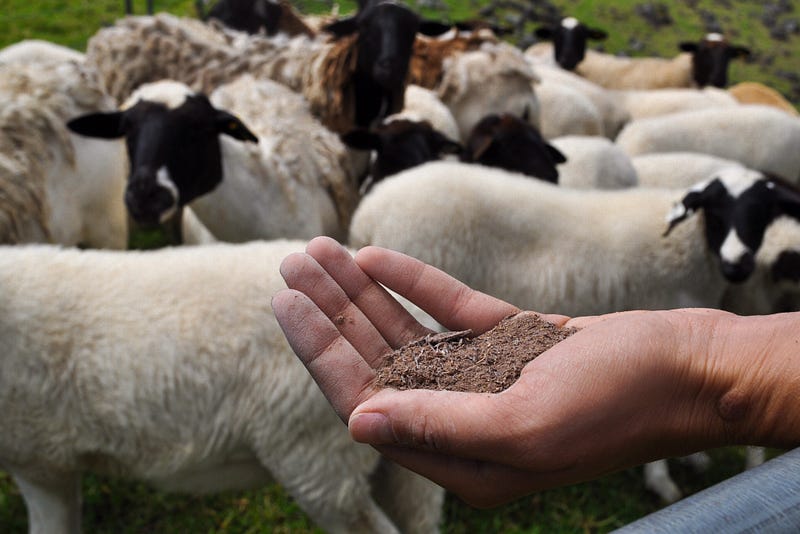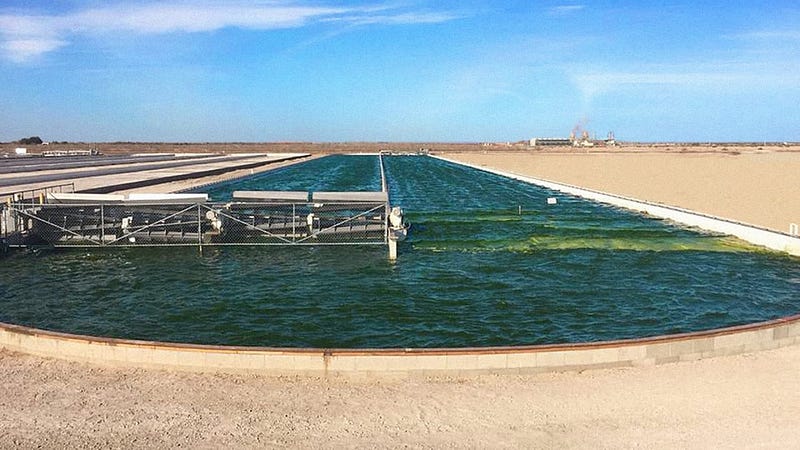Is This the Largest Environmental Sinkhole? Promises vs. Reality
Written on
Chapter 1: The Promise of Algae
The narrative surrounding algae has been filled with optimism. For years, this organism has been seen as a potential ally in our fight against climate change. Algae is recognized not only for its capability as a biofuel that could rival crude oil but also as a bioplastic and a supplement that might minimize methane emissions in agriculture. In August of the previous year, the U.S. Department of Energy allocated $19 million to enhance algae cultivation. Major corporations, such as Shell, Chevron, and ExxonMobil, have invested hundreds of millions in making algae a viable gasoline alternative. ExxonMobil alone dedicated $600 million to algae biofuel research starting in 2009, a commitment that continues to this day. Additionally, Adidas is collaborating with firms like Bloom to combine plastic with algae pellets for more environmentally friendly materials. In the fast-food sector, chains are marketing their algae-fed meat as a greener option, allowing consumers to enjoy beef with less environmental guilt.
Algae has the potential to revolutionize various industries. One of its most compelling advantages is its ability to significantly lower methane emissions produced by livestock. Reducing methane is crucial, as it represents one of the quickest methods to mitigate climate change, providing benefits we could witness in our lifetimes. While methane is less abundant and not as long-lasting as carbon dioxide, it possesses over 80 times the warming capacity of CO2 within its first two decades in the atmosphere. Approximately a quarter of global warming results from human-generated methane. Since methane emissions peak shortly after they are released, curtailing these emissions can yield immediate cooling effects. While waste management and fossil fuel production contribute to methane levels, the agricultural sector remains the largest emitter.
Livestock is a significant contributor. With over a billion cattle globally, their digestion of grass and grain naturally produces methane. Our desire for meat seems incompatible with a sustainable future. To bridge this gap, researchers have started incorporating a type of red algae known as Asparagopsis taxiformis into livestock feed to lower their methane emissions. The outcomes are astonishing.
When introduced into the diets of cows, sheep, goats, and buffalo, this red algae can cut methane emissions by up to 90%, with only 2% of their feed needing to be comprised of the additive. Once ingested, the algae's compounds inhibit methane production during digestion, although scientists are still investigating how this mechanism works. Importantly, the algae poses no harm to the animals and does not affect the fatty acids required for wool, meat, and milk production. Companies like Symbrosia have even begun producing this supplement on sustainable farms.
Our diets could remain unchanged; we would merely need to adjust what our livestock consume.

Chapter 2: The Reality Check
However, many of the promising claims about algae fall apart under scrutiny. Algae supplements can only be used in feedlots where cattle spend their final months before slaughter. In these settings, the algae is mixed into corn, soy, and grain. Yet, nearly 90% of methane emissions stem from cows digesting grass and leaves in pastures. The algae cannot be incorporated into their pasture diet, as cows typically dislike its taste and may refuse to eat it. Even if they could be persuaded to consume it, their microbiomes might adapt, leading to a resurgence in methane production. Additionally, scaling up red algae production to feed hundreds of millions, if not billions, of cows worldwide presents logistical challenges. At best, even if red algae performs optimally, it could only reduce global methane emissions by around 9%.
As for its potential as a biofuel, algae has proven even less effective, with most major investors abandoning their algae initiatives after yielding minimal results. Investment in algae biofuels surged in 2005, with projections suggesting a billion barrels of algae oil would be available by 2014 to compete with traditional gasoline. However, over a decade later, algae biofuel has yet to achieve cost competitiveness.
Initially, algae was considered a fuel source due to its high lipid content. ExxonMobil's genetic engineering has increased the lipid levels in some algae species to 40%. These lipids can then be transformed into various fuels, including diesel and jet fuel. Algae also has the advantage of growing up to ten times faster than terrestrial plants and can thrive in regions unsuitable for conventional crops, thus avoiding competition with food sources and local ecosystems.
Yet, cultivating algae is complex. Significant amounts of fertilizer, CO2, and water are necessary, along with carefully controlled temperature ranges. These conditions must be sustained in open ponds, where researchers must also prevent uncontrolled algae growth that could harm local ecosystems. Following this intricate growing process, genetic modification is required to enhance lipid production, and substantial investment is needed for efficient fuel conversion.
The lipid extraction process from algae is energy-intensive, often requiring more energy than the final product yields. To mitigate this, researchers have adopted jet mixing technology, where jets of solvents mix with algae in a liquid suspension, allowing lipids to be captured more efficiently.

Despite partnerships like that of Synthetic Genomics and ExxonMobil aiming to produce about 10,000 barrels of algae biofuel daily by 2025, this is paltry compared to their daily output of 4 million barrels of crude oil. Moreover, the cost of algae biofuel is likely to remain significantly higher than that of oil. Consequently, allegations have emerged that ExxonMobil might be leveraging algae for greenwashing purposes, benefiting more from its marketing than from the actual product. This notion gains traction when one considers that, in some years, Exxon allocated $56 million to green marketing, compared to only $30 million for algae biofuels.
The idea of using algae as a solution seemed poetic. Historically, algae has played a vital role in capturing atmospheric carbon and sequestering it deep beneath the ocean's surface. Billions of years ago, it contributed to the creation of oxygen, transforming a toxic environment into one conducive to diverse life. In contrast, our actions appear to be taking us in the opposite direction.
This video discusses the remarkable yet alarming story of a deadly sinkhole in Florida, revealing its significance in understanding environmental issues.
This video showcases an exploration of a massive underwater sinkhole in Belize, highlighting its ecological importance and beauty.